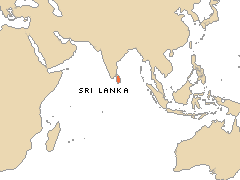
How do we know
Data showing the reduction in maternal mortality was drawn from birth and death registration. Comparisons were made between overall declines in female mortality and declines in maternal mortality. A strong association was found between the timing of specific interventions, such as the introduction of transfusion services, and the reduction in particular causes of maternal death, such as hemorrhage.Downloads
- Read the entire case study
(PDF | 117 K)
External Links
Health Condition: Pregnancy-related complications annually claim the lives of 585,000 women. Some 99 percent of these deaths take place in developing countries, where women have a 1 in 8 chance of dying in their lifetime due to pregnancy-related causes, compared with the 1 in 4,800 chance in Western Europe. In the 1950s, the maternal mortality ratio in Sri Lanka was estimated at between 500 and 600 per 100,000 births.
Intervention or Program: Beginning in the 1950s, the government of Sri Lanka made special efforts to extend health services, including critical elements of maternal health care, through a widespread rural health network. Sri Lanka's success in reducing maternal deaths is attributed to widespread access to maternal health care, which is built upon:
- a strong health system that provides free services to the entire population, including in the rural areas;
- the professionalization and broad use of midwives;
- the systematic use of health information to identify problems and guide decision-making; and
- targeted quality improvements to vulnerable groups.
Impact: Sri Lanka has halved maternal deaths (relative to the number of live births) at least every 12 years since 1935. This has meant a decline in the maternal mortality ratio from between 500 and 600 maternal deaths per 100,000 live births in 1950 to 60 per 100,000 today. In Sri Lanka today, skilled practitioners attend to 97 percent of the births, compared with 30 percent in 1940.
Cost and Cost-Effectiveness: Sri Lanka has spent less on health - and achieved far more - than most of the countries at similar income levels. In India, for example, the maternal mortality ratio is more than 400 per 100,000 live births, and spending on health constitutes over 5 percent of GNP. In Sri Lanka, the ratio is less than one-quarter of that, and the country spends only 3 percent of GNP on health.

